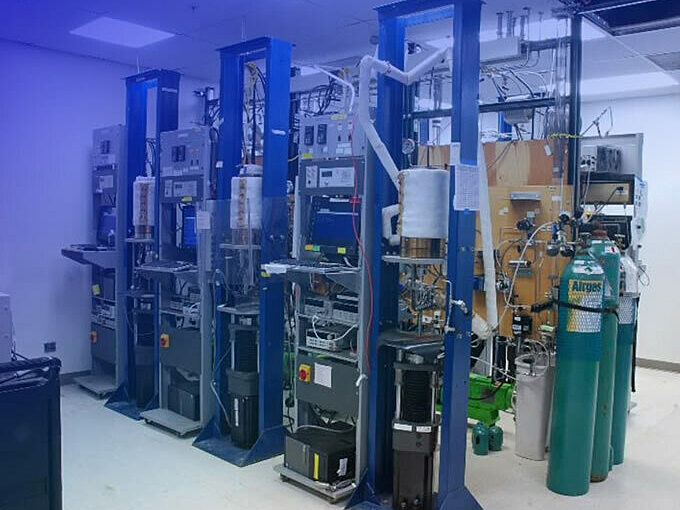Creep and Stress Rupture Testing Services
Creep and rupture tests are essential to evaluate the time-dependent behaviour of metals and composites at elevated temperatures under applied stress. Deformation is measured as a function of time.
With five creep/stress rupture machines operational, and the capability to test designed specimens up to 257mm (10⅛") in length, our Creep and Rupture lab provides the data essential for this evaluation.

Creep testing
Creep testing (creep-rupture, stress-rupture, stress-relaxation) is conducted to determine the deformation (creep) of a material when subjected to a prolonged load at a constant temperature.
- a creep test has the objective of measuring creep and creep rates occurring at stresses usually well below those which would result in fracture
- in a creep-rupture test, progressive specimen deformation and the time to rupture are measured; in general, deformation during this test is much larger than that developed during a creep test
- a stress-rupture test is a test in which time to rupture is measured; deformation measurements are not acquired during this test
- the stress-relaxation test is similar to the creep test, except the load continually decreases instead of remaining constant; the load is reduced at intervals to maintain a constant strain
Lucideon is capable of conducting the below tests up to 900°C (1650°F) in temperature and 4,500 kg (10,000 lbs) in load. Temperature and creep readings are recorded and monitored continuously to ensure accuracy of results.
ASTM test methods relevant to this service:
- ASTM D2990 Compressive Creep and Creep-Rupture of Plastics
- ASTM E139 Creep, Creep-Rupture & Stress Rupture Tests of Metallic Materials
- ASTM E292 Conducting Time-for-Rupture Notch Tension Tests of Materials
- ASTM E328 Stress Relaxation for Materials and Structures
